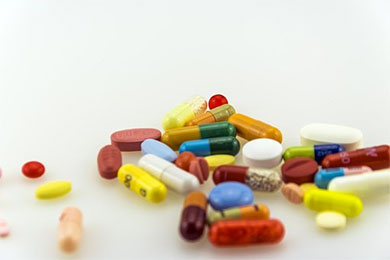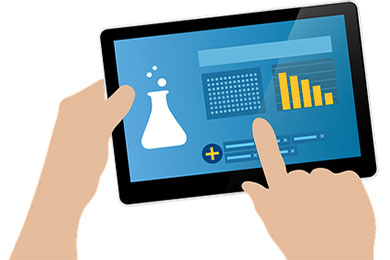Excipients are typically the major components of a solid dosage form and are included for a number of reasons such as to aid the manufacturing process or to add functionality to the formulation.
 Rarely does the active pharmaceutical ingredient (API) have the physical characteristics alone needed for processing. As a matter of fact, the compression of drugs in solid forms, almost never have the physical and mechanical properties suitable for direct compression.
Rarely does the active pharmaceutical ingredient (API) have the physical characteristics alone needed for processing. As a matter of fact, the compression of drugs in solid forms, almost never have the physical and mechanical properties suitable for direct compression.
Unfortunately, additional processing such as wet granulation and drying add time and costs to manufacturing. However, with the addition of the appropriate excipients, blending and direct compression becomes a preferred and economical process for producing tablets. Excipients play roles such as fillers, binders, glidants, lubricants, and disintegrants, which are critical in the production of consistent, quality product.
About Functional (Specialty) Excipients
Of particular interest are functional or specialty excipients. These excipients are modified to serve as more than one function, or to improve process efficiencies or costs. There are three general ways pharmaceutical excipients are modified for better functionality:
- Physical changes
- Chemical modifications
- Co-processing with the API or other excipients
With physical changes, materials may be less crystalline or even amorphous to allow the formulation to exhibit better dissolution and bioavailability. With chemical changes, differences in solubility and viscosity can result in materials suitable for binding, disintegration and coating. Co-processing of excipients with API or other excipients can impact product flow, uniformity, deformation and dissolution.
During formulation development, prototype products are typically tested for flow, content uniformity, hardness, disintegration time and dissolution profiles. As the product progresses through clinical stages and development, other factors such as manufacturing time, ease of manufacturing, efficiencies and costs are also evaluated.
Selecting the Best Excipients for Formulation
 The University of Maryland School of Pharmacy’s Applied Pharmaceutics Lab (APhL) has extensive experience in the selection of excipients, formulation design, and product testing. The range of testing spans both physical testing such as particle size distribution, flow, and density to chemical testing such as potency, content uniformity and dissolution rates.
The University of Maryland School of Pharmacy’s Applied Pharmaceutics Lab (APhL) has extensive experience in the selection of excipients, formulation design, and product testing. The range of testing spans both physical testing such as particle size distribution, flow, and density to chemical testing such as potency, content uniformity and dissolution rates.
Related Publications
Effect of Common Excipients on the Oral Drug Absorption of Biopharmaceutics Classification System Class 3 Drugs Cimetidine and Acyclovir; Soundarya Vaithianathan, Sam H. Haidar, Xinyuan Zhang, Wenlei Jiang, Christopher Avon , Thomas C. Dowling, Changxing Shao, Maureen Kane, Stephen W. Hoag, Mark H. Flasar September 2015; https://onlinelibrary.wiley.com/doi/abs/10.1002/jps.24643.
Analysis of curing of a sustained release coating formulation by application of NIR spectroscopy to monitor changes associated with glyceryl monostearate, Harris Howland,Raafat Fahmy and Stephen W. Hoag; https://www.tandfonline.com/doi/abs/10.3109/03639045.2014.947505.
Investigation of the physical-mechanical properties of Eudragit® RS PO / RL PO and their mixtures with common pharmaceutical excipients Vivek S. Dave,Raafat M. Fahmy and Stephen W. Hoag; September, 2012; https://www.ncbi.nlm.nih.gov/pubmed/22994144.
| Reference List of Key Pharmaceutical Excipient Manufacturers | |
|---|---|
| Akzo Nobel Functional Chemicals | Dow |
| Americhem | DPL-US |
| Archer Daniels Midland Company | Dupont |
| Asahi Kasei Chemicals | Eastman |
| Ashland | EMD |
| Avantor | Evonik Corp |
| BASF | FMC |
| BioSpectra | Fuji Health Science |
| Brenntag Group | Gattefosse |
| Capsugel | Lubrizol |
| Cargill | Roquette |
| Chemcial Corporation | Samsung Fine Chemicals |
| Chemical Solutions | Siegfied |
| Clariant | Sigma Aldrich |
| Colorcon | Solvay |
| Corden Pharma | Spectrum Chemical |
| Croda | SPI Pharma |
